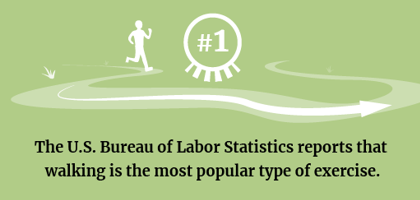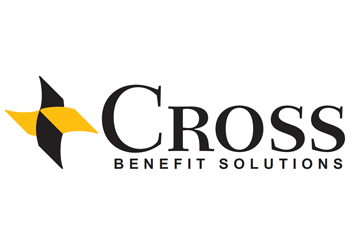Live Well, Work Well June 2023
Share
Safety Tips for Exercising Outdoors
As we move into summer, many will want to exercise outdoors to stay active and get some fresh air. That’s great news, as health experts recommend at least 150 minutes of moderate aerobic activity each week. Also, moving your workout outdoors can boost your mood and improve your concentration.
 Trails, exercise parks, sports fields and stairs provide endless opportunities to switch up your workout. However, working out in hot and humid weather can put extra stress on your body, so consider the following tips to safely exercise outdoors:
Trails, exercise parks, sports fields and stairs provide endless opportunities to switch up your workout. However, working out in hot and humid weather can put extra stress on your body, so consider the following tips to safely exercise outdoors:
- Avoid the hottest part of the day. If possible, plan your workout before 10 a.m. or after 3 p.m. to dodge strong sun rays.
- Wear light-colored clothing. Dark colors absorb the heat, while light colors reflect the sun. Lightweight, loose-fitting clothing will help air circulate and keep you cool.
- Apply sunscreen. Choose a broad-spectrum sunscreen that’s at least 30 SPF. Reapply every two hours, even if the label says it’s sweatproof. Wearing a wide-brimmed hat can also protect your face from the sun.
- Stay hydrated with water. Drink water before you head out and try to take sips every 15 minutes during your workout—whether you’re thirsty or not.
- Replenish your electrolytes. Instead of reaching for a sports drink after a workout, consider replacing your electrolytes with foods like chia seeds, kale, coconut, or fruits and vegetables.
- Listen to your body. If you’re feeling dizzy, faint or nauseous, stop exercising immediately. Sit in the shade and drink water until you’re feeling better.
Your body may need to adapt to outdoor workouts, so follow its lead and gradually pick up the pace or intensity. As always, talk to your doctor before you start a new exercise regimen.
How Nutrition Impacts the Brain
Nutrition plays a critical role in brain function, as the brain is one of the most metabolically active organs in the body. The brain requires a constant supply of nutrients to maintain its structural and functional integrity, and a deficiency in any of these nutrients can significantly impact brain health.
 Certain nutrients have been shown to have a positive impact on brain function. For example, omega-3 fatty acids found in fatty fish (e.g., salmon and tuna), nuts and seeds have been shown to improve cognitive function, memory and mood. The B vitamins in leafy greens, legumes and whole grains are important for producing neurotransmitters that regulate mood and behavior. Antioxidants, which are found in colorful fruits and vegetables, protect the brain from oxidative stress and inflammation. Overall, a well-balanced diet rich in nutrients and low in processed foods and sugar is essential for optimal brain health and function.
Certain nutrients have been shown to have a positive impact on brain function. For example, omega-3 fatty acids found in fatty fish (e.g., salmon and tuna), nuts and seeds have been shown to improve cognitive function, memory and mood. The B vitamins in leafy greens, legumes and whole grains are important for producing neurotransmitters that regulate mood and behavior. Antioxidants, which are found in colorful fruits and vegetables, protect the brain from oxidative stress and inflammation. Overall, a well-balanced diet rich in nutrients and low in processed foods and sugar is essential for optimal brain health and function.
Talk to your doctor if you have questions about brain health.
Health Benefits of Gardening
As we enter the growing season, gardening is a great way to spend time outdoors—and get some exercise. The Centers for Disease Control and Prevention counts activities like raking and cutting grass as light to moderate exercise—while shoveling, digging and chopping wood are considered vigorous exercises. In addition to physical activity, consider these health benefits of gardening:
- Increased vitamin D levels essential for body functions
- Boosted self-esteem
- Improved mood
- Reduced stress and anxiety
Your doctor can provide additional tips for well-being management.
Recipes of the Month
Overnight Oatmeal with Berries
Makes: 1 serving
Ingredients
½ cup low-fat milk
¼ cup fat-free Greek yogurt
2 tsp. honey
¼ tsp. cinnamon
¼ tsp. vanilla extract
½ cup uncooked rolled oats
¼ cup frozen raspberries, blueberries or strawberries
Preparations
1. Combine the milk, Greek yogurt, sugar, cinnamon and vanilla extract in a container or jar with a lid.
2. Add the oats and mix well.
3. Gently fold in the berries.
4. Cover and refrigerate for 8 hours or overnight.
5. Enjoy cold or heat as desired.
Nutritional Information (per serving)
Total calories 311
Total fat 4 g
Protein 17 g
Sodium 86 mg
Carbohydrate 53 g
Dietary fiber 9 g
Saturated fat 1 g
Total sugars 21 g

Pasta Frittata With Peas
Makes: 5 servings
Ingredients
4 ounces spaghetti (whole grain,
regular or thin)
4 eggs (lightly beaten)
A dash of nutmeg (optional)
⅛ tsp. black pepper
⅛ tsp. salt (optional)
⅔ cup shredded cheese (e.g., mozzarella,
Monterrey Jack or cheddar)
1 cup peas
Directions
1. Preheat oven to 350 F.
2. Cook the pasta according to the package directions. Drain and place in a 9-inch pie plate sprayed with nonstick cooking spray.
3. Combine the eggs, seasonings, cheese and peas. Spread the egg mixture over the top of the spaghetti so that the mixture covers the frittata and some of it sinks between the spaghetti strands.
4. Bake for 20 minutes or until a knife inserted near the center comes out clean. Let the frittata stand for five minutes before serving.
Nutritional information for 1 serving
Calories 222
Total fat 9 g
Saturated fat 5 g
Cholesterol 165 mg
Sodium 249 mg
Carbohydrate 22 g
Dietary fiber 5 g
Total sugars 2 g
Added sugars included 0 g
Protein 14 g
Source: MyPlate © 2023 Zywave, Inc. All rights reserved.

